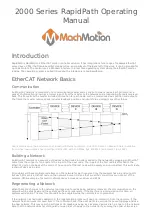
English (GB)
9
4.1.5 Safety concept
This section refers to fig.
A reliable safety concept for the operation of the whole system is
mandatory, because hydrogen is produced as a by-product in the
electrolysis cells.
Before even entering the degassing and storage tank (G), most of
the hydrogen is diluted by the degassing fan to 25 % of the lower
explosive limit (LEL) and led away into the atmosphere. In the
tank, the residual hydrogen is released, diluted and led away into
the atmosphere.
The whole Selcoperm electrolysis system is monitored
permanently and redundantly. Several sensors at the system,
together with hydrogen sensors at the installation location ensure
a safety shutdown of the whole system in the event of a failure.
Small amounts of hydrogen, which can escape due to a leakage,
are led away via the ventilation hole (I) at the highest point of the
room.
The safety concept is evaluated with technical report by a
third-party expert from TÜV SÜD Product Service GmbH. It
ensures safe operation without any additional explosion
protection at the installation location.
Hydrogen (H
2
) characteristics
Conformity with ATEX directive
The ATEX directive covers devices that can be used in a
potentially explosive atmosphere and/or may contain a potentially
explosive atmosphere. However, the ATEX directive is only
applicable, if the device has a potential source of ignition in its
internal zoned area.
The Selcoperm system has internal zoned areas, but the ignition
sources inside the system have been eliminated by design. The
Selcoperm system is not intended for operation in a potentially
explosive atmosphere. Therefore, the Selcoperm system is not
subject to the ATEX directive and must not be ATEX marked. A
declaration of conformity in accordance with the directive is not
applicable.
The following guidelines and standards have been applied:
• Machinery Directive 2006/42/EC
• EN ISO 12100 for the risk analysis
• DIN EN 1127-1 and DIN EN 13463-1 for the identification of
explosion hazards and ignition sources
• (EX-RL) BGR 104, TRBS2152 and DIN EN 60079-10-1 for
zoning and security measures
Furthermore, the explosion safety is ensured by several
measures.
Explosion protection by avoiding the explosive zones:
• Preventing or limiting inside the unit
– Redundant level sensors to ensure liquid filled parts
• Preventing or limiting to the facility
– All connections are designed as permanently technically
sealed according to DIN EN 1127-1:2011 Appendix B and
TRBS 2152 Part2 2.4.3
– Design with flange, glue or weld connection
– Organisational measures by 100 % FAT leakage test,
leakage sensors and permanently monitoring of H
2
leakage
by H
2
sensors and safe shutdown
• Reduction of the zones through ventilation
– Exhaust gas is diluted with air down to 1 % by volume.
Correct air flow is monitored redundantly and leads to safe
shutdown in case of failure.
Explosion Protection by avoiding ignition sources
• An ignition source analysis and earthing concept was carried
out for the system. All ignition sources inside the system were
eliminated by design. During operation, cells and piping of the
system are filled with liquid. No electrical or moving
mechanical components are implemented. Sensors that affect
an explosive area are used as ATEX sensor.
Safety Facts
• Unique safety concept, evaluated with technical report by a
third-party expert from TÜV SÜD Product Service GmbH
• Technically permanently sealed components and thus no zone
in the installation room
• Ignition sources inside the system eliminated by design
• Artificial ventilation to dilute H
2
by-product inside the system
– Redundant monitoring of the ventilation system (fan & flow)
– Pressureless system; no valves after the cells; dangerous
pressure build-up is impossible.
– High quality standard: Every Selcoperm electrolyser is
checked for 100 % performance and tightness at the factory
– Direct pipe-to-product degassing tank with level switches
(cell outlet & tank inlet) to ensure filled lines and electrode
fluid level. No gas accumulation.
– Alarm and safe automatic shutdown of the installation in
case of an error, e.g. drop of flow for dilution
– Redundant safety including a gas detection system
combined with ventilation inside the building
Acceptance test by TÜV is possible for a complete system
installed on site.
Parameter
Value
Note
Vapour density under
standard conditions
(0 °C, 1013 mbar)
0.0899 kg/m
3
Relative vapour density
(air = 1)
0.0695
Significantly lighter
than air
Lower explosive limit
4.0 % by
volume in air
4.65 % by volume in
oxygen
Upper explosive limit
77 % by
volume in air
93.9 % by volume in
oxygen
Ignition temperature
560 °C
Temperature class
T1
Explosion group
IIC
Max. H
2
generation rate
in electrolysis process
0.6 m
3
/kg chlorine equivalent
SES type
Capacity level
(Cl
2
equivalent)
Max. H
2
generation
rate
Dilution air to
reach less than 1
% by volume H
2
(25 % of LEL)
[g/h]
[m
3
/h]
[m
3
/h]
SES-5000
5000
3.0
300
SES-7500
7500
4.5
450
SES-10000
10000
6.0
600
SES-15000
15000
9.0
900
SES-20000
20000
12.0
1200
SES-30000
30000
18.0
1800
SES-45000
45000
27.0
2700










































